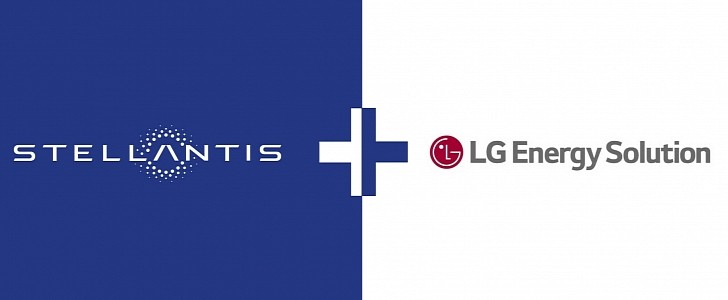It seems that the battery issues LGES (LG Energy Solution) had with Hyundai and GM did not demote any other carmakers to do business with the Korean supplier. On October 18, Stellantis announced it would make a joint venture with LGES to produce up to 40 GWh in batteries for its cars in the U.S., Canada, and Mexico.
The new battery plant did not have a location defined so far. However, it should be determined by 2022. Both companies expect that their cell facility should start operations in 2024. Stellantis plans to invest more than €30 billion ($34.7 billion) in its electrification strategy until 2025, but it has not disclosed how much money the joint venture factory will require. With this future plant with LGES, Stellantis intends to have an annual battery production capacity of 260 GWh by 2030.
Apart from Stellantis, LGES has another joint venture for battery production with a carmaker. It is called Ultium Cells and was established with General Motors before the Chevrolet Bolt EV started presenting fire issues. A joint investigation made by GM and LGES revealed the cells of these vehicles had two severe defects: a torn anode tab and a folded separator.
GM said the two defects had to happen in the same cells for fires to emerge, but a Boeing battery specialist wrote that each of them was already enough for a thermal runaway. Although the company claimed that the problems were rare, it will replace the battery packs in all Bolt EVs and have LGES and other LG companies pay for most recall expenses.
That was not an isolated situation limited to some LGES factories. Hyundai also had multiple fire episodes with Kona Electric units that led the company to stop selling this car in South Korea due to reputation damages. Hyundai determined that the issue was a folded anode tab in LGES cells and made another massive recall to correct that.
Before the GM recall happens and Bolt EV production resumes, the American automaker said it would teach LGES some “GM quality metrics” to prevent that the issue occurs again with other cells. It would be ironic if Chrysler, Dodge, and RAM cells from LGES came with GM quality metrics. However, Stellantis probably prefers that to the recalls its competitors had to face.
Apart from Stellantis, LGES has another joint venture for battery production with a carmaker. It is called Ultium Cells and was established with General Motors before the Chevrolet Bolt EV started presenting fire issues. A joint investigation made by GM and LGES revealed the cells of these vehicles had two severe defects: a torn anode tab and a folded separator.
GM said the two defects had to happen in the same cells for fires to emerge, but a Boeing battery specialist wrote that each of them was already enough for a thermal runaway. Although the company claimed that the problems were rare, it will replace the battery packs in all Bolt EVs and have LGES and other LG companies pay for most recall expenses.
That was not an isolated situation limited to some LGES factories. Hyundai also had multiple fire episodes with Kona Electric units that led the company to stop selling this car in South Korea due to reputation damages. Hyundai determined that the issue was a folded anode tab in LGES cells and made another massive recall to correct that.
Before the GM recall happens and Bolt EV production resumes, the American automaker said it would teach LGES some “GM quality metrics” to prevent that the issue occurs again with other cells. It would be ironic if Chrysler, Dodge, and RAM cells from LGES came with GM quality metrics. However, Stellantis probably prefers that to the recalls its competitors had to face.






